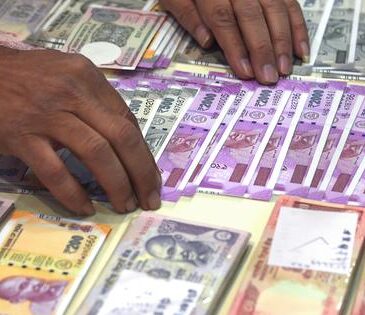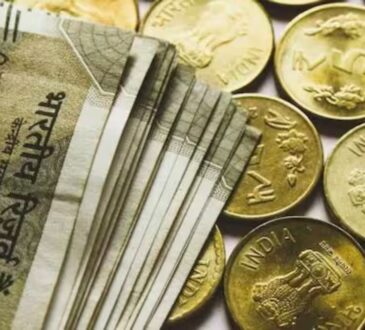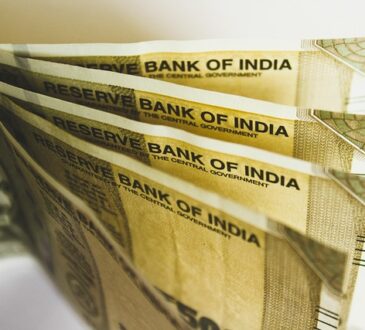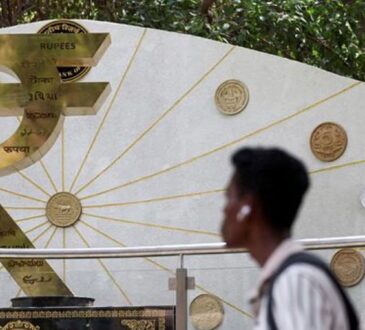
SINGAPORE – A wave of dollar selling in Asia is an ominous sign for the greenback as the world’s export powerhouse starts to question a decades-long trend of investing its big trade surpluses in US assets.
Ripples from a record rally in the Taiwan dollar on Friday and Monday are now spreading outward, driving surges for currencies in Singapore, South Korea, Malaysia, China and Hong Kong.
The Thai baht has also been on the rise, trading around 32.62 to the dollar on Tuesday, compared with 34.88 baht a month ago.
The moves sound a warning for the dollar because they suggest money is moving into Asia at scale and that a key pillar of dollar support is wobbling.
While Tuesday brought a measure of stability, following a stunning 10% two-day leap for Taiwan’s currency, the Hong Kong dollar was testing the strong end of its peg and the Singapore dollar has soared close to its highest in more than a decade.
“To me, it has a very sort of Asian-crisis-in-reverse feel to it,” said Louis-Vincent Gave, founding partner of Gavekal Research, commenting on the speed of the currency moves.
In 1997 and 1998 capital flight sank currencies from Thailand to Indonesia and South Korea and left the region determined to accumulate dollars in the aftermath.
“Since the Asian crisis, Asian savings have not only been massive, but they’ve had this tendency to be redeployed into US Treasuries,” said Gave. “And now, all of a sudden, that trade no longer looks like the one-way slam dunk that it had been for so long.
One-sided selling wave
Traders in Taiwan had reported difficulty executing trades, such was the one-sided wave of dollar selling, and speculated it had been at least tacitly endorsed by the central bank.
Dealers said volumes were also heavy in other Asian markets.
At its heart, the break has been triggered by US President Donald Trump’s aggressive tariffs, analysts said, rattling investors’ confidence in the dollar and upending the flow of trade dollars into US assets in two places.
First, exporters especially in China can expect fewer receipts as tariffs cut access to US customers. Second, fear of a US downturn casts a shadow over US asset returns.
“Trump’s policies have weakened the market’s confidence in the performance of US dollar assets,” said Gary Ng, senior economist at Natixis.
Some are speculating on what markets have termed a “Mar-a-Lago agreement,” he said, or a deal — named after Trump’s gilded Florida resort — to weaken the dollar.
Taiwan’s Office of Trade Negotiations denied tariff talks in Washington last week had involved the topic of foreign exchange.
Talk becomes reality
Asia’s biggest piles of dollars sit in China, Taiwan, South Korea and Singapore, which combined number in the trillions.
In China alone, foreign currency deposits at banks — mostly dollars and mostly held by exporters — were $959.8 billion at the end March, the highest in nearly three years.
On top of that are layered investments funded in these currencies, which have low borrowing costs by global standards and investments in US stocks and bonds by pension and insurance funds, which have tended to keep foreign exchange hedges small due to the costs involved.
There are signs the dollar view is shifting from all corners. Goldman Sachs said in a note on Tuesday that investor clients had recently flipped from short yuan positions, to long positions, or in other words, they are shorting the US dollar expecting further weakness.
A popular trade that involved buying cheap US dollars in the Hong Kong dollar forwards market, known in markets as the gift that never stopped giving, also went into reverse since it rested on the Hong Kong dollar staying still.
“Macro funds and leveraged players have hundreds of billions of dollars in the Hong Kong dollar forwards free-money trade, and now they are unwinding,” said Mukesh Dave, chief investment officer at Aravali Asset Management, a global arbitrage fund based in Singapore.
Hong Kong’s de-facto central bank said on Monday it has been reducing duration in its US Treasury holdings and diversifying currency exposure into non-US assets.
Rallies in Asia’s bond markets suggests exporters’ and long-only money may be coming home, too.
“Repatriation talk is becoming reality,” said Parisha Saimbi, Asia-Pacific rates and FX strategist at BNP Paribas in Singapore, as investors and exporters are either unwinding or rushing to hedge.
“Whichever format it comes in, it suggests that the support for the dollar is shifting and it’s turning lower. … I think it speaks to this idea that there is a de-dollarisation in action.”
Voting with their wallets
UBS estimates that if Taiwan’s insurance companies increased hedging ratios to their 2017-21 averages, it could be worth some $70 billion in US dollar selling.
To be sure, Taiwan’s central bank has vowed to stabilise the local currency and even the island’s president took the unusual step of recording a video message to insist the exchange rate was not part of US trade talks.
Still, the market seems to be voting with its wallet.
“The US-Taiwan dollar exchange rate is a canary in the coal mine,” said Brent Donnelly, a veteran trader and president at analytics firm Spectra Markets.
“Asian demand for US dollars and Asian central bank desire to support the US dollar is waning.”




